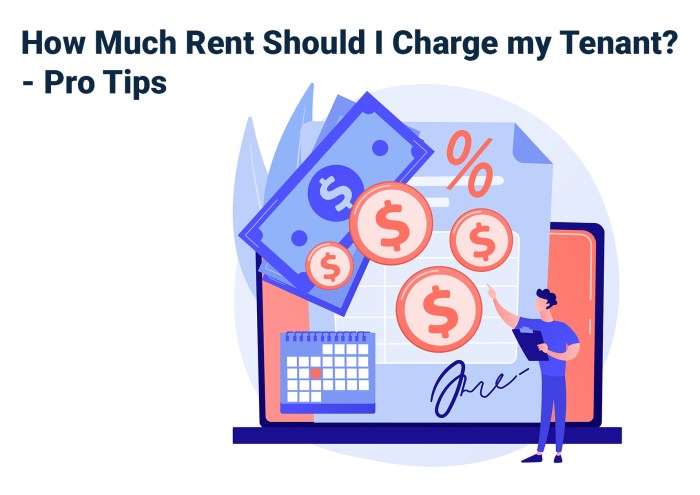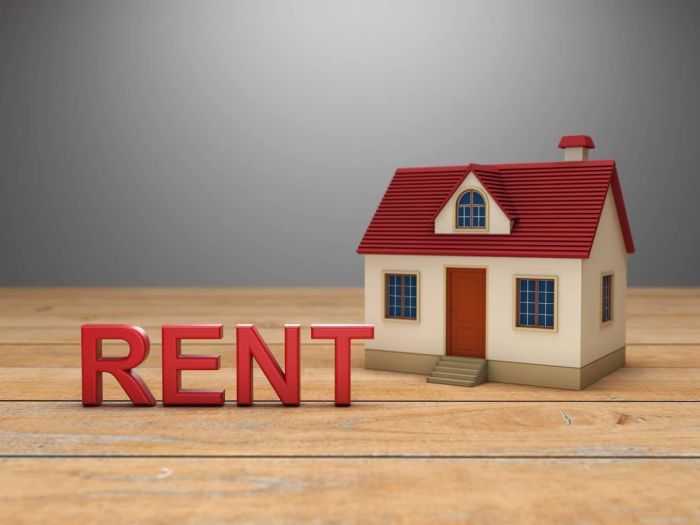Determining the Optimal Rental Price for Your Property: How Much Should I Rent My House For
How much should i rent my house for – Setting the right rental price is crucial for maximizing your return on investment while ensuring a steady stream of reliable tenants. This involves a thorough understanding of your local market, a realistic assessment of your property’s value, and a careful calculation of your income and expenses. This guide will walk you through the key steps involved in determining the ideal rental price for your house.
Understanding Your Local Market, How much should i rent my house for
A deep understanding of your local rental market is paramount. Several factors influence rental rates, and ignoring them can lead to either underpricing your property and losing potential income or overpricing and facing prolonged vacancy.
Factors like crime rates, school quality, proximity to amenities (parks, shopping centers, hospitals), and the availability of public transportation significantly impact rental demand and prices. A neighborhood with low crime, excellent schools, and convenient amenities will generally command higher rents than one lacking these features. Recent economic trends, such as job growth or economic downturns, also play a significant role in shaping rental demand and pricing.
A booming local economy typically translates into increased rental demand and higher prices, while an economic downturn can lead to decreased demand and lower prices.
To gain a clearer picture, compare your property to similar rentals within a 5-mile radius. The following table illustrates this comparison:
| Address | Size (sq ft) | Bedrooms/Bathrooms | Monthly Rent |
|---|---|---|---|
| 123 Main Street | 1500 | 3/2 | $2500 |
| 456 Oak Avenue | 1600 | 3/2.5 | $2700 |
| 789 Pine Lane | 1400 | 2/2 | $2300 |
| 101 Maple Drive | 1700 | 4/3 | $3000 |
Assessing Your Property’s Value

Source: co.uk
A Comparative Market Analysis (CMA) is essential for accurately assessing your property’s rental value. This involves comparing your property’s features and condition to those of similar rental properties in your area. Consider factors such as the size, number of bedrooms and bathrooms, age, condition, upgrades (new appliances, updated kitchen, etc.), and included amenities (parking, laundry facilities).
Successful marketing strategies for comparable properties often include high-quality photographs, detailed descriptions highlighting key features, and online listings on popular rental platforms. For instance, a property with updated appliances and a renovated kitchen might be marketed as “modern and stylish,” while a property with a large yard might be marketed as “perfect for families.”
To increase your property’s rental value, identify necessary repairs and upgrades. A cost-benefit analysis will help you determine which improvements offer the best return on investment. This analysis might reveal that fixing a leaky roof is more cost-effective than installing a new swimming pool, given the expected increase in rental income.
| Repair/Upgrade | Cost | Expected Increase in Rent |
|---|---|---|
| Roof Repair | $5000 | $100/month |
| Kitchen Update | $10000 | $200/month |
| New Paint | $2000 | $50/month |
Calculating Rental Income and Expenses
Creating a comprehensive budget is crucial for determining your property’s profitability. This should include all anticipated monthly expenses, such as mortgage payments, property taxes, insurance premiums, maintenance costs (including routine upkeep and potential repairs), and vacancy costs (accounting for periods when the property is not rented). Unexpected expenses should also be factored in with a contingency fund.
Determining the optimal rental price for your property requires careful consideration of various factors, including location, size, and amenities. To gain a better understanding of current market rates, researching comparable properties is crucial; for instance, checking out listings like those found on websites featuring houses for rent victorville can provide valuable insights. Ultimately, a competitive yet fair rental price will maximize your return while attracting reliable tenants.
Net Operating Income (NOI) is calculated by subtracting all operating expenses from your gross rental income. The formula is:
NOI = Gross Rental Income – Operating Expenses
Potential sources of additional income include parking spaces, storage units, or even renting out a portion of the property (if permitted).
Setting a Competitive Rent Price

Source: staticmb.com
Comparing your property’s NOI to those of comparable properties helps justify your rental price. A property with a higher NOI, indicating greater profitability, can typically command a higher rent. Setting your rent price at the high, middle, or low end of the market range each presents advantages and disadvantages. A high price might lead to faster vacancy, while a low price might not maximize your profits.
A middle-range price often balances these concerns.
Consider surveying potential renters to understand their desired price ranges. This data can be visually represented using a bar graph showing the frequency distribution of rental price preferences.
For example, a bar graph could show that a significant number of potential renters are willing to pay between $2,400 and $2,600 per month, while fewer are willing to pay above $2,800. This information can guide your pricing decision.
Legal and Regulatory Considerations
Understanding local laws and regulations governing rental properties is crucial. This includes tenant rights (such as the right to privacy and quiet enjoyment), landlord responsibilities (such as maintaining the property in habitable condition), and fair housing laws (prohibiting discrimination based on race, religion, national origin, etc.). Lease agreements should address common issues and protect both landlords and tenants.
For example, a lease agreement should clearly Artikel responsibilities for repairs, rent payment, and lease termination.
Marketing Your Rental Property
A well-defined marketing plan is essential for attracting qualified tenants. This includes online listings on popular rental websites, targeted advertising (such as in local newspapers or community bulletin boards), and potentially open houses. Effective property descriptions highlight key features and amenities using compelling language. High-quality photographs are crucial. A photograph of a living room, for instance, should showcase ample natural light, a comfortable and spacious layout, and appealing décor.
The photo should be well-lit, sharply focused, and decluttered, giving the impression of a clean, welcoming space. Consider the angle, the lighting, and the overall composition to create a visually appealing and memorable image.
FAQ Insights
What if my property needs significant repairs before renting?
Factor repair costs into your overall budget and consider how those improvements will impact your potential rental income. A cost-benefit analysis can help determine whether repairs are worthwhile.
How long should I expect to have vacancies between tenants?
Plan for potential vacancy periods by factoring in a vacancy rate (typically 5-10%) into your annual income projections. Effective marketing can help minimize vacancy time.
What type of lease agreement is best?
Consult with a legal professional to determine the best lease agreement for your situation. Standard lease agreements are readily available online but should be reviewed by an attorney to ensure compliance with local laws and to protect your interests.
How do I screen potential tenants effectively?
Conduct thorough background and credit checks, verify employment and income, and consider requiring references. This protects you from potential problems and helps you find reliable tenants.
